Bailey Hall
Introduction
Text-to-speech Audio
Images
Old Bailey Hall, pre-renovation.
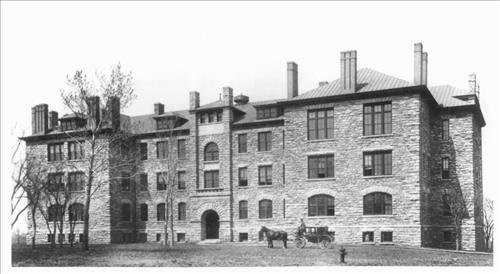
New Bailey Hall, post-renovation. A new metal roof was installed in 2007.
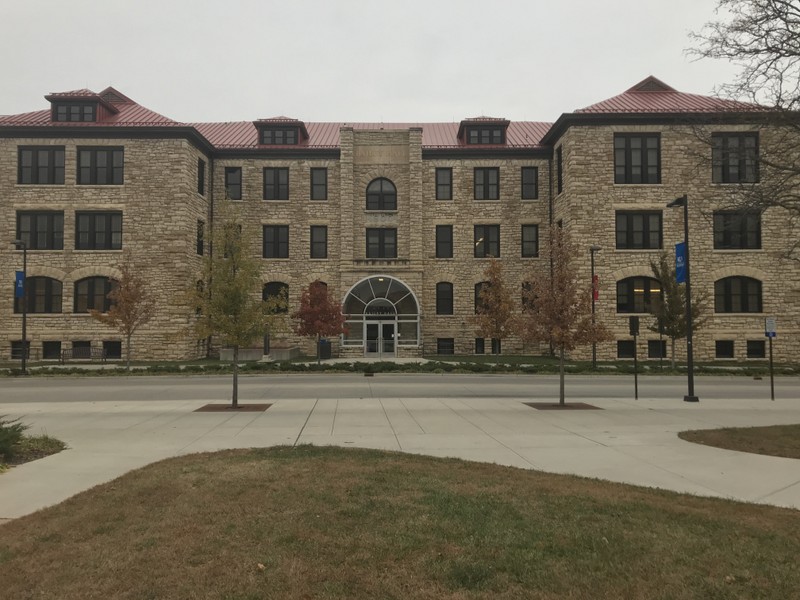
Bailey Hall from behind
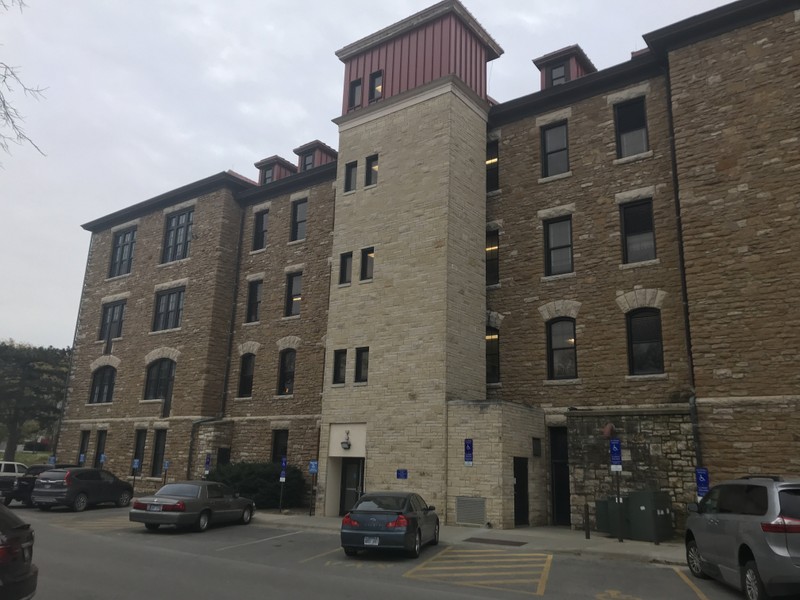
Registry of departments in Bailey Hall
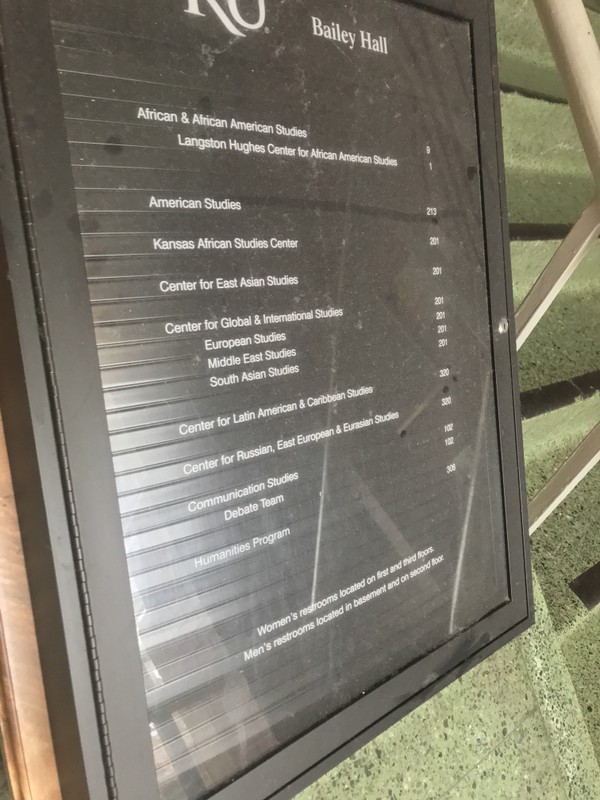
4th floor views from Bailey Hall, from which you can see KU's Memorial Stadium.
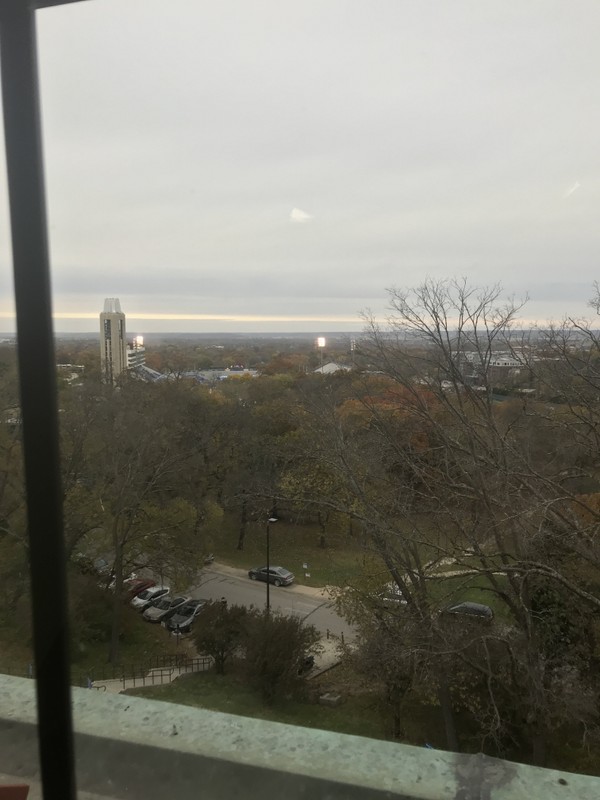
Interior hallway, 3rd floor, containing the Humanities and other academic departments.
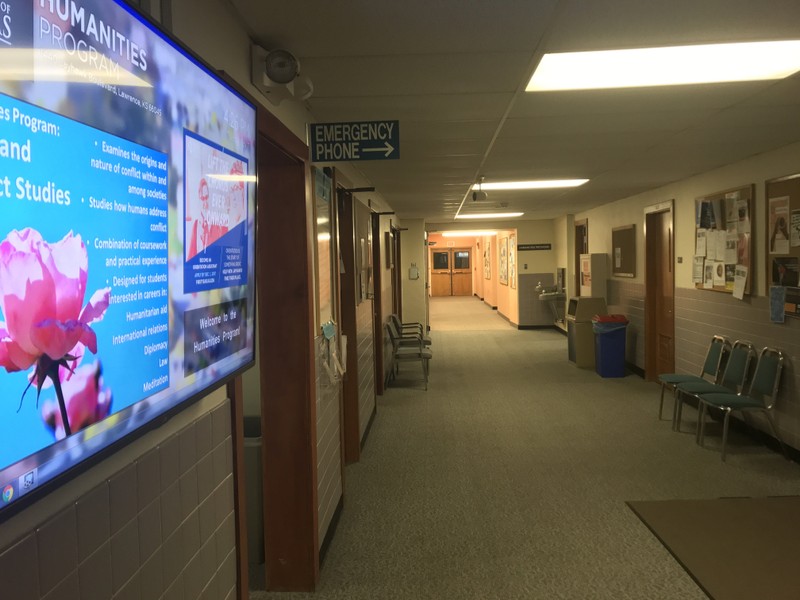
A plaque of Professor E. H. S. Bailey, celebrating the building's namesake.
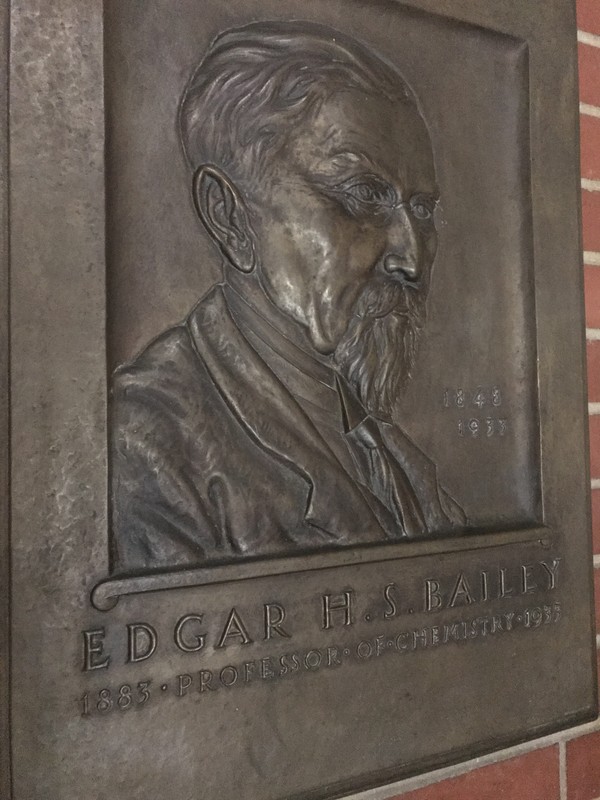
A plaque celebrating the discovery of helium in natural gas from the American Chemical Society.
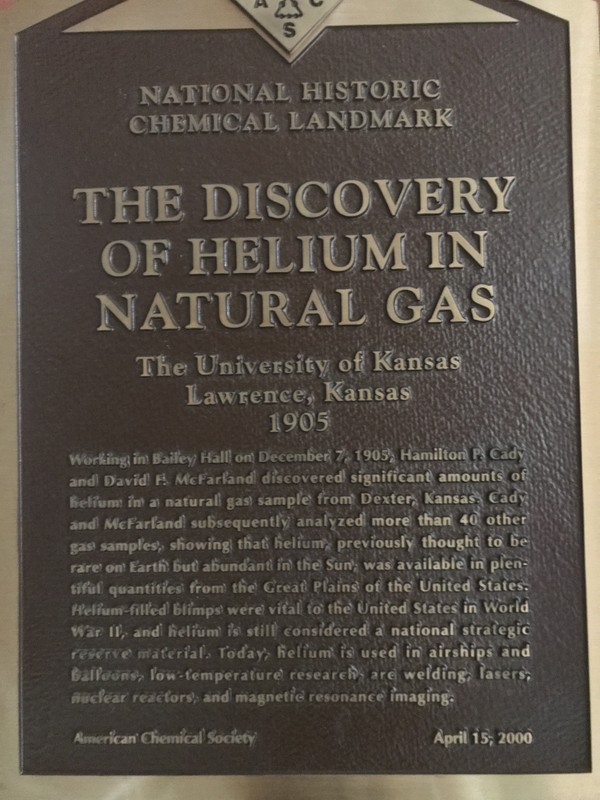
A plaque in front of Bailey Hall explaining Bailey's contribution to the "Rock Chalk Jayhawk" chant

Backstory and Context
Text-to-speech Audio
After construction completed in 1900, then-named Chemistry Hall served as the newest home for the chemistry department. The building "replaced KU's first chemistry building, which had been designed for seventy-five students and was soon overcrowded."2 Bailey Hall rectified those issues, giving the chemistry department enough room to expand as needed, as well as, at the time, the "best practical conditions for chemical and pharmaceutical work, according to modern methods.”3 As KU was one of the first to invest in this sort of research, Bailey Hall's top-notch resources allowed for their program to attain national distinctions.4
Chemistry Hall at first had no resplendent historically significant person, nor wealthy donor, on which to base its heritage. For the first few years of its existence, it merely went by the simple name of "Chemistry Building. Only after years of being informally known as "Bailey's Barn" was it officially "christened as Bailey Chemistry Laboratory."5 During this time, a number of scientific breakthroughs were made; "perhaps the most lastingly significant achievement to come out of "Bailey's Barn" was the 1905 discovery of helium in natural gas by KU chemistry professors Hamilton P. Cady and David F. McFarland."6 In 1935, "Bailey's Barn" would officially be named after the famed professor, celebrating both his achievements in chemistry and social contributions to KU.
The 1950s would signal some significant changes for "Bailey's Barn." In 1954, the Chemistry Department was moved to yet another new home in newly constructed Malott Hall. Soon after, the building underwent over $600,000 in renovations--12 times its original cost!7 After renovations were completed in 1956, the School of Education called Bailey home, and would for another 44 years. Its current inhabitants--departments from the College of Liberal Arts and Sciences--moved in during the 2000 academic year. Now, Bailey is home to Communication Studies, African and African American Studies, American Studies, Humanities, and a number of other important social scientific/humanistic departments.8
Shortly after this move, its historical significance was recognized by both the state of Kansas and the nation. In 2001, the Kansas Historical Registry and the National Register of Historic Places recognized Bailey Hall.9 These registries highlighted the importance of Chemistry Hall's storied past. Even though Haskell's Romanesque design was never meant to turn heads, the people that have inhabited this space, the accomplishments they have made, and the national recognition it has gained certainly will.
Cite This Entry
Daniel M. Chick. "Bailey Hall." Clio: Your Guide to History. December 13, 2017. Accessed March 28, 2025. https://theclio.com/tour/2510/14/reverse
Sources
2Bailey Hall. University of Kansas. Accessed November 07, 2017. https://www2.ku.edu/~union/hmof/landmarks/bailey.shtml.
3McCool, John H. Bailey's Barn.
4"At the time the University of Kansas was one of the few sites for chemical research, and these studies helped raise the national reputation of its chemistry and pharmacy programs." Bailey Hall. University of Kansas.
5McCool, John H. Bailey's Barn.; Bailey Hall, University of Kansas.
6McCool, John H. Bailey's Barn.
7McCool, John H. Bailey's Barn.
8McCool, John H.. Bailey's Barn.
9Kansas Historic Resources Registry. Kansas Historical Society. Accessed November 07, 2017. http://khri.kansasgis.org/index.cfm?in=045-3010-00610; National Register Digital Assets. National Register of Historic Places. Accessed November 07, 2017. https://npgallery.nps.gov/NRHP/AssetDetail/05156298-792e-4c50-8f65-18b9a88bef3e?branding=NRHP.

